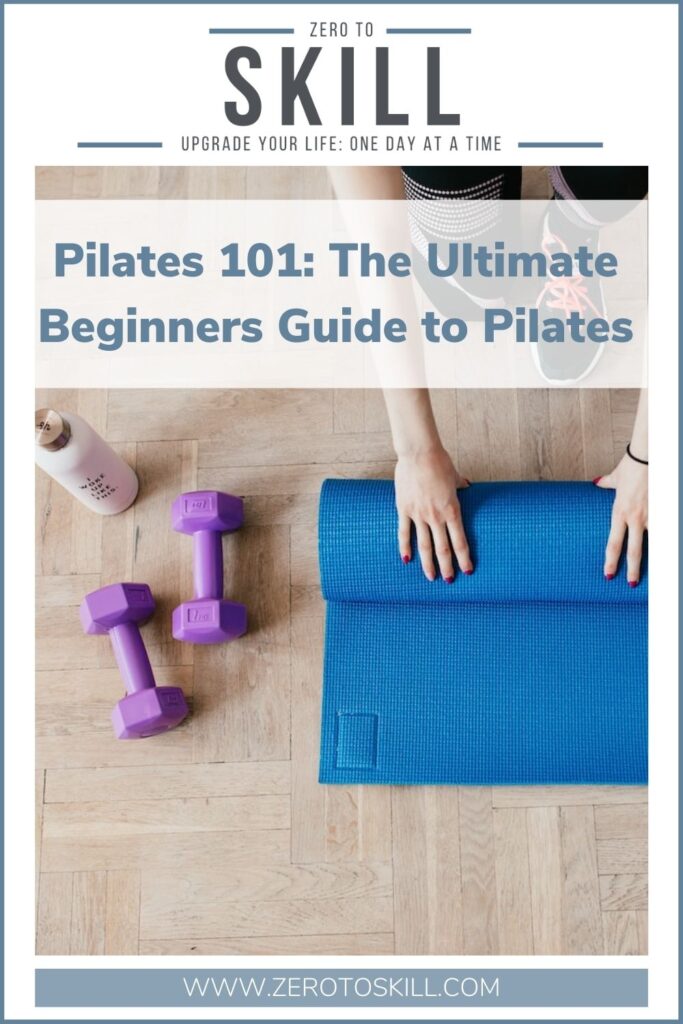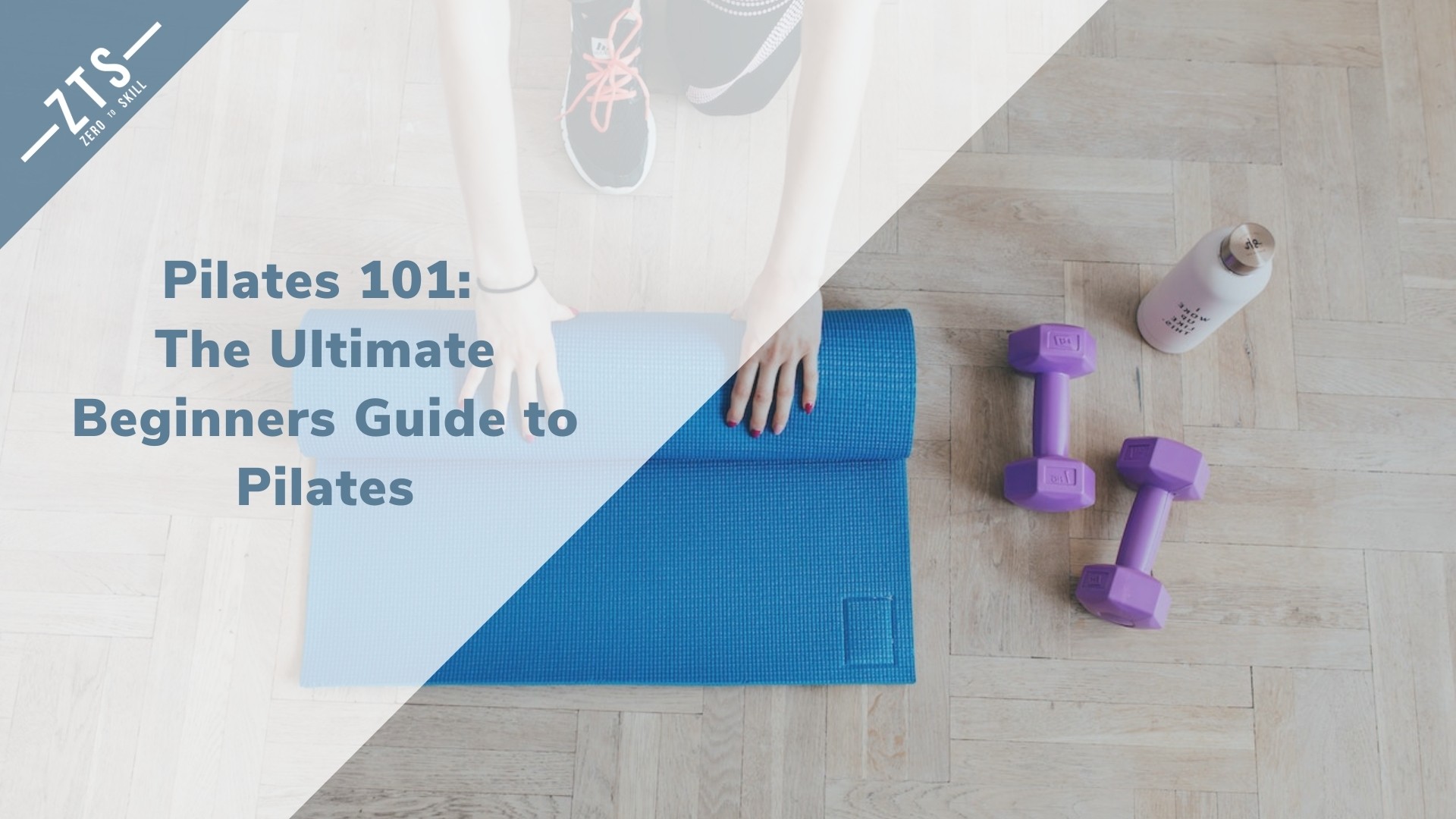It is not a secret that pilates is one of the fundamentals of body control and precision and this beginners guide to pilates will teach you everything you need to know about it. With so many health trends and exercise regimens becoming more popular within the days, pilates has also turned out to be one of the fastest-growing fitness trends.
Don’t Miss: Top 15 Yoga Books For Beginners
Table of Contents
- Beginner’s Guide to Pilates
- What is Pilates?
- The 5 Pilates Principles
- Types of Pilates
- Pilates Equipment
- Benefits of Pilates
- How to Get Started
- Who Is Pilates Suitable for?
Beginner’s Guide to Pilates
The principles of a pilates practice have always been concentration, control, precision, and breath flow. This exercise practice focuses on the entire body as well as the mind. The movements done in the practice target different muscles in order to strengthen them. Once you grasp a deep understanding of these movements, you will be able to experience the maximum benefits of a pilates workout.
What is Pilates?
The main purpose of this beginners guide to pilates is to understand this workout is overall core strength. Pilates is a workout that allows the practitioner to develop stability and control. Mainly, strengthening the core is the sole purpose of this practice however, all the movements done in this practice are dedicated to training the body as well as allowing the body to move with grace, efficiency and ease.
These qualities, or Pilates principles, are applied in every Pilates exercise. While this is a beginners guide to pilates, it is important to know that this practice targets on developing all muscles evenly through different movements. This practice has the intention of targeting the weaker part of the body in order to build up some muscle. While it doesn’t use any weights, pilates includes a lot of repetitions of each movement in order to strengthen the core and allow the person to build up precision in their movements.
The Pilates technique also focuses on quality over quantity. Instead of having the user repeat the same thing over and over, pilates focuses mainly on doing the movements correctly so that the exercise can strengthen the core. The idea is that by performing each exercise with precision and focusing on the breath you can achieve notorious results in a smaller period of time.
The 5 Pilates Principles
In this beginners guide to pilates we talk about the main principles of this practice, this means that there are five specific points that each pilates practice should focus on.
Breath
One of the main qualities of pilates is focusing on evenly breathing. Once you are able to master your breath and coordinate it along with movements you will easily realize that your body will flow with the same ease as well. Most pilates exercises coordinate breath with a certain movement and therefore the entire practice becomes more engaged.
Precision
While precision is a tougher point for people starting to practice pilates, it is one of the main qualities to achieve for all practitoners. This means that the entire practice is focused on proper alignment, which strengthens the core overall.
Control
The main and sole purpose of a pilates practice is acquiring complete control over your muscles and your movements. This beginners guide to pilates has the purpose of demonstrating to everyone how important these key concepts of pilates are. Control is a quality emphasized in each pilates practice given that it is one of the main components of it.
Concentration
Each exercise is different from one another, and therefore, concentration is required in each exercise in order to achieve maximum results from each movement.
Flow
Unlike other exercise practices, pilates is meant to have a lot of movements that are not rigid and they simply flow. All exercises are meant to flow with grace and single motion. The equipment can seem a little rigid however once you get a grasp of the concept, all movements should flow with ease.
Types of Pilates
Something important that you will learn through this beginners guide to pilates is that there are mainly two types of pilates: the one that requires a mat and then another more professional one that can be done with special equipment. Pilates can be done within a home or even in a specialized studio, depending on your preference. Mainly, both practices focus on adding resistance to the body, using your own body weight. In addition, there are graduated levels to the springs of the pilates equipment from which you can add resistance and increase your level with time. It is all about resistance, endurance, and building up strength.
Pilates Equipment
When it comes to pilates equipment, this is the best beginners guide to pilates to not only find out how pilates works, but also to know what equipment you need in order to practice it from the convenience of your own home. The equipment can vary, from small ones you can carry around everywhere to large equipment that involves an apparatus.
Large Equipment
Large equipment mainly involves an apparatus, also known as a reformer. Mainly, these pilates bed-like apparatus can be found in studios, however, people that are more experts at the subject often get these reformers to have at home for daily practice. In addition, some other large equipment that people regularly use is a pilates chair and a ladder barrel.
Small Equipment
Small equipment is more practical for beginners or for people who travel and even like taking their equipment with them. Small pilates equipment often involves a mat, dumbells, resistance bands, foam rollers, pilates rings, among other things. These small equipment can be used in different pilates practices and they are great to target different body areas as well as mix different exercises
Benefits of Pilates
Pilates is more than a strengthening exercise, as mentioned previously, it focuses on core strength and alignment. It is mainly done with your own body weight and therefore the muscle builds up by practicing this exercise. Pilates strengthens your muscles through muscle contraction, and this is done through different movements through the practice. Mainly, pilates promotes flat adbominal muscles as all exercises are focused on strengthening your core. All exercises are meant to help you with flexibility, posture, and even with body alignment.
Whole Body Fitness
This practice is a whole body fitness regimen. It doesnt just focus on one body part, but it works equally the entire body. It focuses on strength and it integrates all body parts in the practice. It is a great exercise given that it is a full-body fitness training.
Creates Strength
An amazing part of pilates training, is that you create lean muscles without ending up looking bulky. You are getting toned without looking super ripped and that is what a lot of people want their bodies to look like. They want to create body strength without growing the muscles out of proportion, and therefore pilates creates strong muscles without bulk.
Pilates Increases Flexibility
Of course this amazing body workout increases flexibility in the entire body. You are constantly given new movements that require you to use numerous parts of your body and therefore little by little you will work and improve your flexibility.
Promotes Weight Loss
Given that pilates is a form of exercise, weight loss is one of the main benefits of practicing it. Not only does it help people to build muscle, and create a leaner look, but it also balances your structure and helps people regain a toned body though exercise.
Increases Awareness
One of the biggest advantages of pilates is the face that it allows the user to strengthen their body and mind connection. People become more aware and in tune with their bodies. All pilates movements require full attention in order to be coordinated and done correctly. All movements require concentration and precision, which overall allows the user to increase body awareness.
How to Get Started
This beginners guide to pilates talks about everything from what pilates is to how to get you started. The easiest way to get you started is finding yourself some classes with an actual instructor that can guide you through a lesson. Taking classes with someone that knows what pilates is and how it works is the best way to get you started.
During the entire pandemic situation, a lot of pilates studios had to shut down, however there are still various ways on how people could practice yoga. From app classes, youtube tutorials, to even live guided videos through social media, the options are endless.
Nevertheless, you can also learn through a combination of classes and home workouts in order to get you started.
Who Is Pilates Suitable for?
This Beginners guide to pilates will let you know from point a to z everything you need to know regarding this physical practice. With these basic guidelines on this exercise a person can already tell if pilates is something that they are interested in, or if its not for you. However, pilates is suitable for people of all ages.
The intensity of a practice really depends on the group of people that are taking the class or how your instructor decides to guide the lessons. If it is a group of seniors, its more likely that the intensity of the practice will be low and not as tough, however you will still be able to reach a great core workout. However, there are other pilates classes that are tougher and have a difficult level for people that have some experience with this practice and therefore, they want to improve their performance.
You Might Also Enjoy: The Ultimate Guide to the Best Under Desk Ellipticals for 2020
Pin this graphic below to Pinterest to save for later!


